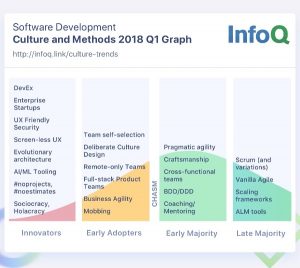Every strategist who has at least a year’s worth of experience has been responsible for developing a keyphrase strategy, either for their employer or clients.
The general purpose of this deliverable is to identify and map out specific keywords and phrases that:
- Align with the client’s brand, offerings/services, and industry
- Align with the client’s target audience online behavior and top-of-mind awareness around the brand’s industry
- Identify content development opportunities, especially around long-tail phrases, consumer questions and statements.
When developed correctly, an ideal keyphrase strategy should allow your client to understand exactly what terms/phrases they need to incorporate into their digital assets in order to:
- Increase keyword authority
- Increase qualified traffic
- Increase qualified conversions
From experience, the value of these strategies is often diminished or lost because of the strategist’s inability to properly articulate the purpose of this deliverable, as it pertains to driving monthly conversions through greater volumes of relevant traffic.
Strategists often relay the terms they identified from Google’s Keyword Planner, each terms monthly average search volume, and give themselves a big pat on the back thinking they nailed it.
Well, think again friends.
Offering Limited Insight
When considering the vast levels of data that could go into a keyphrase strategy, simply offering individual terms/phrases that are accompanied by estimations around search volume does very little for the client, considering:
So before you send off your next keyphrase strategy that consists of words and search volume, try going the extra mile with the following forms of information.
Doing so will allow you to show your client exactly what forms of content need to be created in order align with the expectations of Google and online users, as well as how they can allocate their content development resources in order to build authority around approachable keywords/concepts.
How To Create A Keyphrase Strategy That’s Guaranteed To Impress Your Clients
Without going into the initial steps of how to use tools like Google’s Keyword Planner to understand search volume and CPC averages, let’s jump into real actionable insight.
1. Manually Search With Each Individual Identified Keyword/phrase
In order to understand whether or not the terms you initially believe are relevant for your client are in fact so, you will want to apply a manual search with each individual keyword and phrase.
2. Record What Types Of Content Appear
Here, you will want to create an additional column in your Excel document that lists out what forms of content dominate the first page of Google.
Doing this allows you and your client to see exactly what types of content resonate, which should inform you on:
- Whether the term you are using connects with the type of audience your client is trying to attract
- What types of content populate e.g. lengthy, in-depth information, brief product details complimented with images, educational articles, etc.
After you have collected this information, you are now able to prescribe more specific recommendations around the type of content your client should invest their resources in creating.
Understanding that:
- What you see on the first page of search results is in fact the most compelling form of information based on assessments offered by Google and other search engines
- These assessments are calculated by online behavior connected to a group of similar-minded users
You can justify to your client that they should in fact build out specific forms of content in order to align with Google’s standards and understanding for what provides particular users with the best possible experience.
For example, if you search incognito for “content marketing services,” you are confronted with content that:
- Provides top-level insight without going into historical details or in-depth instructions
- Acts as conversion drivers for specific services
- In general, contains information that speaks to what content marketing is, how businesses and brands can use content to increase online engagement/revenue, and how each service provider can benefit potential clients
- Includes specific call-to-actions to purchase or learn more about services
So, instead of telling your client that they should create a series of blog article that offers 750 – 1,000 words of detail, they should really create product-focused landing pages that align with the standards identified above.
3. Record Who Currently Owns The Space Attached To Each Individual Keyword/phrase
Now that you understand how to interpret the most ideal form of content your client should create per term/phrase, it’s important to offer realistic expectations around what terms are approaching as far as authority and rankings are considered.
Create another column in your Excel doc. next to the types of content that appears within search results and record the top three brands that command the first five to seven positions within the search listings.
Using the same example around “content marketing services,” if your client is a brand new organization that is working with a newer websites, they probably won’t have the time or the resources to beat out established brands like Content Harmony and Brafton.
However, if your client is already an established brand that’s recognized for its content marketing services, you might be able to outrank these competitors by aligning with the ideal form of content, as mentioned above.
Try It Out Yourself
Providing your clients with this type of detailed information allows you to expand upon the value of your keyphrase strategy, without getting to nitty gritty with the details and data.
You are able to make more informed recommendations that allow your client to remain agile in how they allocate and invest their resources when it comes to content development.
More importantly, it allows your clients to understand exactly where they currently stand within the organic search space, who their true online competitors are, and what it will take to own the top listings connected to each individual keyword/phrase.
Hand-Picked Related Articles:
- How To Identify Keywords With Purchase Intent
- Keyword Research Tools For Local Markets
- How To Do Keyword Research like a Pro [DIY]
* Lead image adapted from henk.sijgers (on when I can). Some rights reserved.
How To Create A Conversion Centered Keyword Strategy
The post How To Create A Conversion Centered Keyword Strategy appeared first on Search Engine People Blog.
Search Engine People Blog(82)










